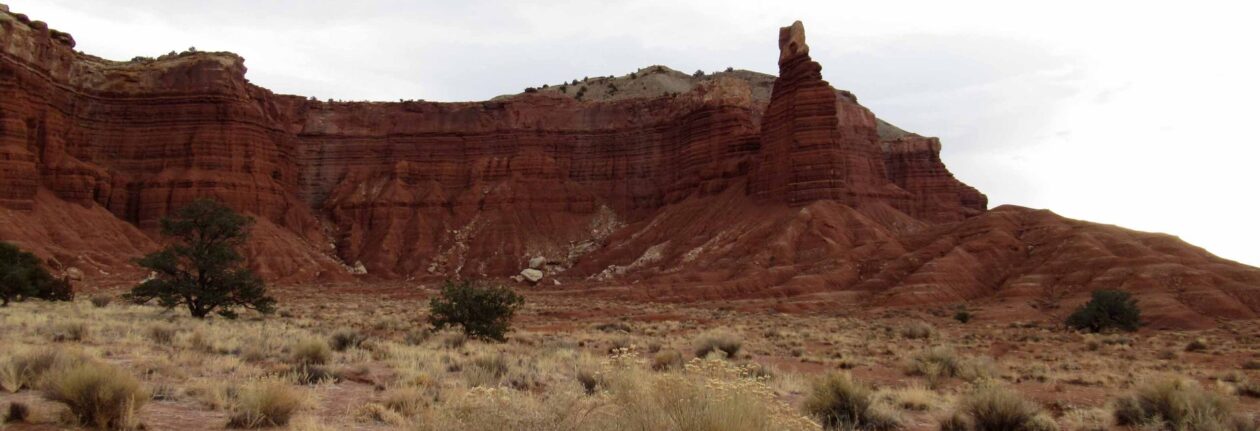Kandy, Sri Lanka
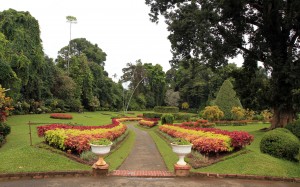
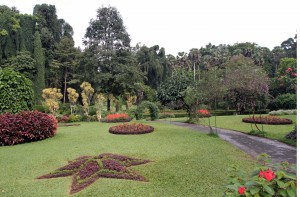
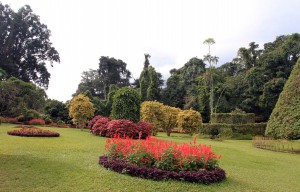
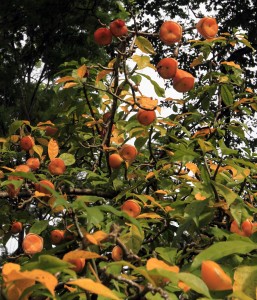
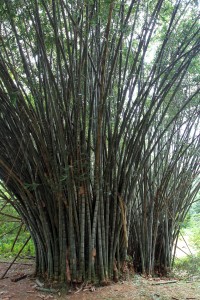
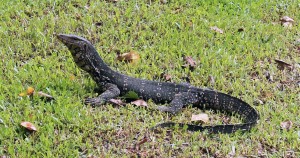
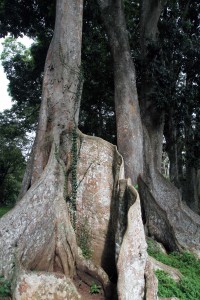
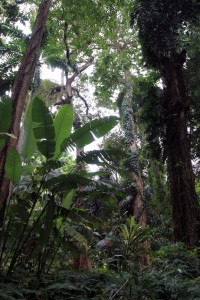
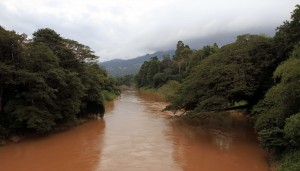
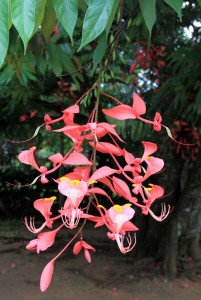
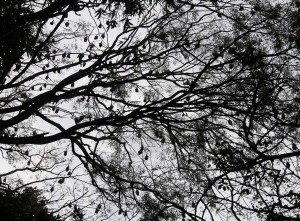
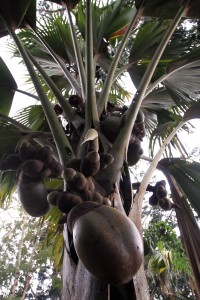
I woke up today, got dressed in my wet, dirty clothes (no sense in putting on dry, clean clothes in this monsoon weather), and then had the hostel call a tuk-tuk to take me to the Royal Botanic Gardens (I hate using tuk-tuks and the like, but at least the ones hired through the hostel are reasonably priced, as opposed to all the inflated foreigner prices one finds from random tuk-tuks on the street). The tuk-tuk arrived, I got in, and we drove the six or so kilometers to the botanical gardens; once there, I paid the driver, bought my entrance ticket, and then I walked inside. Luckily, it was not raining at the moment and it remained dry most of the time I was in the gardens. The Royal Botanic Gardens dates back to the reign of King Kirti Sri Rajasinghe (1747 to 1780 AD) when he made this area in to a royal garden and afterwards, King Rajadhi Rajasinghe, his successor, had a residence built in the garden. However, the present gardens owes its existence to Mr. Alexander Moon, a Briton, who moved the gardens from Kalutara to here (Peradeniya) in 1821, six years after the British conquered the Kandyan Kingdom. Also, of interest to film buffs (such as myself), the gardens were used in the film ‘The Bridge on the River Kwai’. The gardens have a very diverse and large collection of species and I walked around enjoying the various plants; I also liked the layout of the gardens and was impressed with how well maintained they were. I first walked to the Plant House; then to the Cactus House, Orchid House, Flower Garden (a very picturesque spot in the gardens), the Fernery, Palm Avenues, the suspension bridge over the Mahaweli River, the Ficus collection (which had many large bats hanging from the branches, constantly making screeching noises – how can they ever get any sleep?), Cook’s Pine Avenue (with big and tall pine trees), the Java Fig Tree, the National Herbarium (unfortunately, entrance to this building is by appointment only; pity, I could’ve really used some herbal treatments to remedy my penis size), the Double Coconut Palm collection (Lodoicea maldivica, a native to the Seychelles, the nut weighs 10-20 kilograms, takes 5-8 years to mature, and 1-2 years to germinate; the seed resembles a two-lobed coconut joined as Siamese twins), the Lake and Giant Bamboo collection, the Medicinal Garden, and the Palm and Cycad collections. After finishing my tour of the gardens, it began to rain some and I ended up taking a bus to Kandy Central Bus Station (on account of the tuk-tuk drivers offering widely differing and inflated prices; one driver was desperate and sounded like he was on the verge of tears as he kept lowering his price as I kept walking away – the price was finally right at the end, but out of principle I could not turn back since he chose to offer me a high price to begin with).
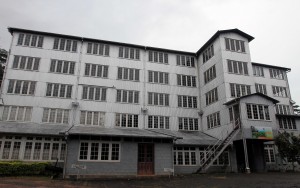
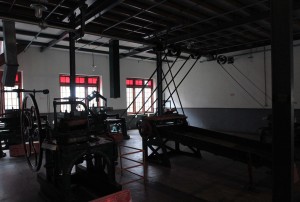
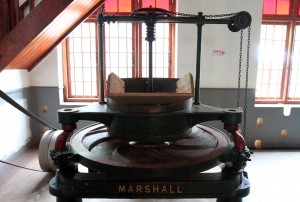
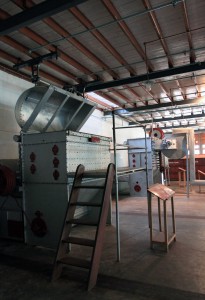
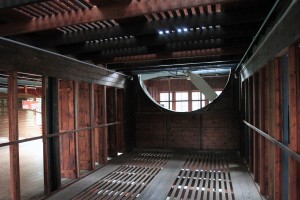
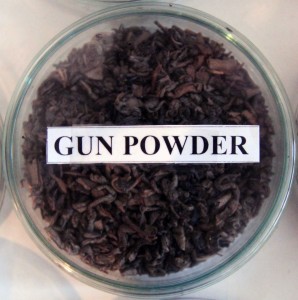
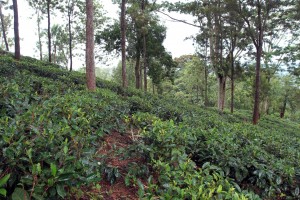
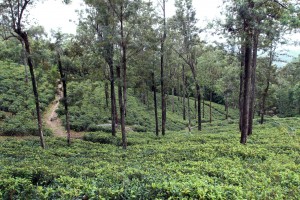
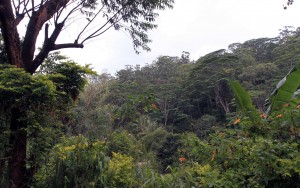
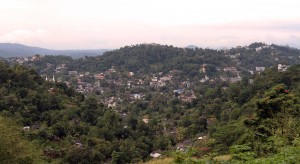
Once at Kandy Central Bus Station, I walked past the Railroad Station and then some before finding a tuk-tuk on the side of the road, far away from all the tourists. I then employed the tuk-tuk driver to take me to the Ceylon Tea Museum, high in the hills south of Kandy. Once at the museum, I paid the entrance fee and began touring the old factory. The first tea seeds and young plants were brought to Ceylon from the Botanical Gardens in Calcutta in 1839; although James Taylor (a Scotsman, just like Lipton) of Loolecondera is considered the father of the tea industry in Ceylon, having first planted tea commercially in 1867, two years before the coffee blight, when many coffee plantation were forced to switch to tea of risk extinction; today Sri Lanka is the largest orthodox of tea in the world and has the distinction of conducting the largest tea auction in the world, which has been in operation since 1883. On the ground floor of the museum, there were many old machines on display that were used to manufacture tea (such as large rollers used to crush the tea leaves, driers used to stop the fermentation of the leaves, sifters to sort the different grades of the crushed tea leaves, and engines used to run all the machinery), as well as tables to ferment the leaves and storage bins to place the leaves after grading. On the first floor there was a library, scientific instruments to measure all the properties of the tea plants and its produce, agricultural items used to grow the plants, and photographs and displays detailing the history of tea in Ceylon (or Sri Lanka if you like). The second floor had large withering fans to blow hot air and many racks of nylon and Jute Hessian tats, which were used to spread the freshly picked tea leaves; the leaves would then take about forty-eight hours to wither; after withering, they would then be sent to the mechanical rollers to be crushed; then they would be left to ferment before being sent to the driers to stop the fermentation process at just the right time (if left to ferment too long, they could end up giving off a repugnant taste) and thus preserving the tea until dipped in to hot water just before consumption; after drying, they would be sifted, graded, sorted, and bagged. On the third floor there were sales offices with a wide variety of tea for visitors to purchase. Lastly, on the fourth floor, there were tables, a television showing a documentary on tea production, tea history in Ceylon, and the health benefits of tea; also, on the fourth floor, I received my free pot of tea (comes with the entry ticket); I was served Kandy tea, a locally produced, full-bodied tea, grown between 2,000 and 4,000 feet (it was very nice and refreshing). After visiting the museum, I walked around the surrounding area, looking at the tea plants covering the hillside (I actually got the smallest, cutest leech on my foot (I was wearing sandals today on account of my shoes still being soaked from my trip to Polonnaruva) and had to flick the little bloodsucker off – of course he had drawn first blood and is lucky I didn’t go Rambo on his ass), before deciding to walk back to Kandy (it was only three miles and it wasn’t raining at the time; it was also all down hill). I enjoyed walking on the curving road, looking at the lush green vegetation and surrounding hills with buildings scattered all over them. It wasn’t long before I reached Kandy and then decided to explore the town some.
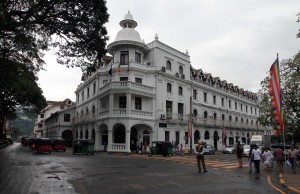
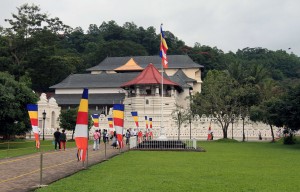
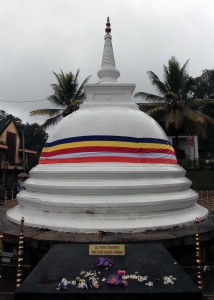
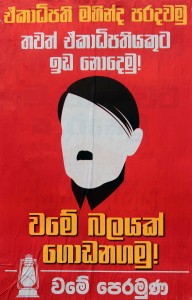
I walked around the small town (though large for Central Sri Lanka), passing by many old buildings and shops. I still had tea on my mind and was going to have a soothing cup, but the cafe I stopped at was too hot inside to really enjoy a cup of hot tea; so I walked on and decided to visit Sri Dalada Maligawa, a temple complex with many different museums dedicated to Buddhism and shrines; it is also famous for having a sacred relic from Lord Buddha – a tooth; however, visitors cannot see the tooth and I had already seen many Buddhist temples and educational displays on the religion, so I opted not to pay the 1,000 rupees to enter this holy place; I did walk by the Temple of the god Natha and a stupa on my way out. I then walked around the lake in Kandy before returning to the hostel. Once at the hostel, I realized I needed more money, so I hired a tuk-tuk to take me in to town, stop at an ATM, and then at a liquor store (for local beer), before returning back to the hostel. After running those important errands, I took a cold shower (there wasn’t any hot water available), relaxed, and drank two beers while listening to music. When it was time for dinner, I joined the other hostel guests, including the Portuguese man from the hostel in Dambulla who had just arrived with his lady friend and Australian buddy, and we all took tuk-tuks to a nearby cafe (I think there were eleven of us in total). For dinner I had mixed kottu (mixed with roti, seafood, chicken, vegetables) with cheese, a cup of tea, and a glass of avocado juice; actually, almost everyone had ordered kottu, which meant we could hear the chef dicing up each meal with his two steel slicers, making it hard to hear anything else. After dinner, we took tuk-tuks to the expat pub we drank at last night; here I had ice cream for dessert and two 50 mL drinks of gin (each with a lime slice). After a while, I called it quits, took a tuk-tuk back to the hostel, and enjoyed two beers I had left over from the run earlier today in the refrigerator. I also hung out with the resident dog who really appreciated me petting her (I don’t think she gets much love or attention from her owners) before finishing up my beers and retiring for the night.
